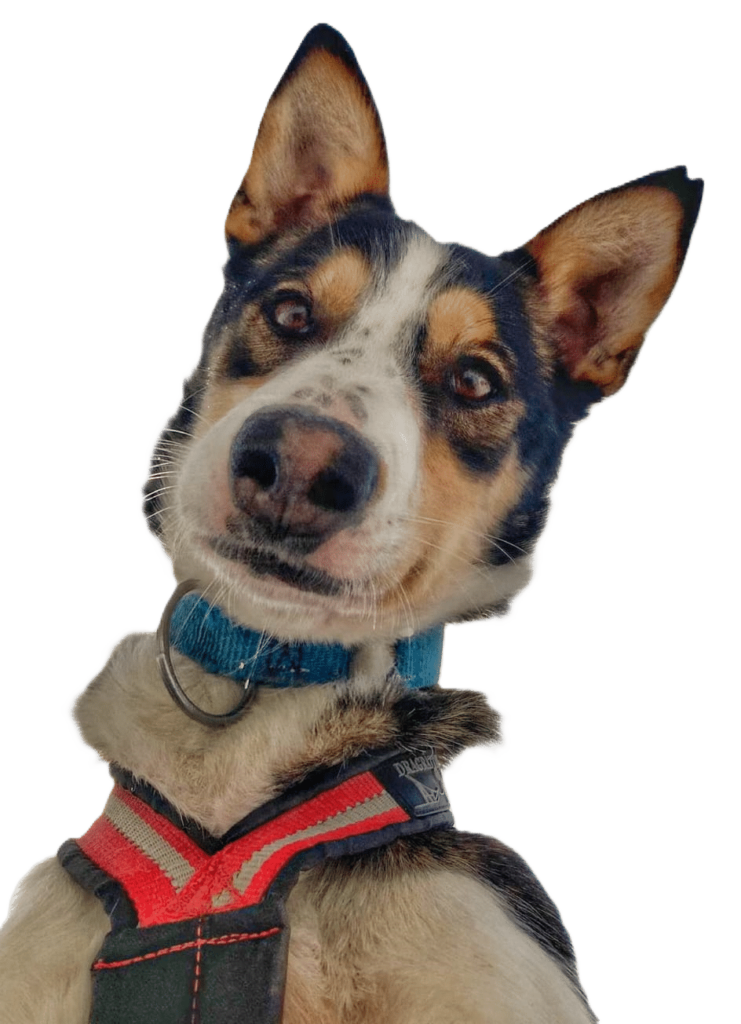Don’t worry! We’ve put together the most important terms so you can impress your friends already when you tell them about your tour. Let’s start!
The Husky
Many people have a very specific idea of what a husky should look like and are surprised when they meet ours on a husky tour. Because unlike the Siberian Huskies, our dogs are Alaskan Huskies, a breed that is particularly enduring and fast.
Musher
A musher is the person standing at the back of the sled, steering it. That’s the theory, but for us, mushing means much more than just giving commands; it’s about constantly observing your team and ensuring their well-being. Your team trusts you to make the right decisions.
Lead dog
He is the direct extension between the musher and the team. He looks for the best possible trail for the team and trusts the musher’s commands. A good example of the interaction between Petter and his lead dog you can find here. Over the years, Petter has discovered and trained many outstanding lead dogs, such as Gaga, Odin, Bandit, Kira and Fina. If you want to find out more about what makes a good guide dog, we definitely recommend that you ask Petter about it during a tour!
Handler
Some people would say that the handler is the musher’s personal assistant. In the everyday life, our handlers support us in all kinds of tasks that come up in the kennel, from feeding the dogs to cutting snacks and, above all, in training.
During a race, the handler helps the musher at the checkpoints. He has to prepare the depot bags in advance and helps the musher to find his way around as quickly as possible. He also looks after the dogs that are not running before, during and after the race. However, there are clear zones that the handler is not allowed to enter, because during the race the musher has to look after his team alone and the handler is not allowed to assist.
Check points
Of course, given the length of the route, you can’t take everything you need for the entire race, so there are various points along the route where supplies can be refuelled: the checkpoints. Here the musher has alos the opportunity to let the race vets check the dogs and to get some rest for the teams.
Races
There are different types of races in sled dog sport. Petter has mainly competed in long-distance races for many years. The longest sled dog race in the world is the Iditarod in Alaska, which is organised annually to commemorate the Serumrum of 1925. Incidentally, the longest race in Europe is the Finnmarksløpet with 1200 kilometres in the northernmost part of Norway, which Petter has won four times.
Booties
A question we get very often: What are those little socks your dogs have on their paws? Here you can make a direct impression, because these socks are called booties. They are put on the dogs when they have small injuries in their paws or the weather conditions would favour injuries in the paws. Long-haired dogs like Vaiana, for example, always wear booties because their long fur and body heat quickly form lumps of ice between their toes, which can lead to small cuts.
Dog coats
And while we’re on the subject of stylish winter accessories, there’s one thing we can’t do without: the dog coat. Of course, this is not just a fashion statement, it is designed to protect dogs in heavy snowfall.


